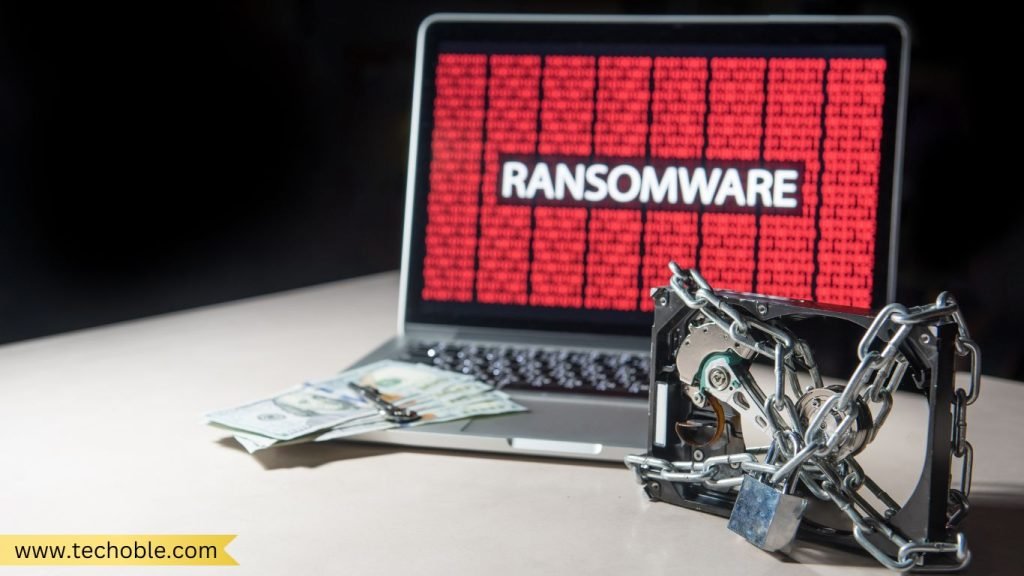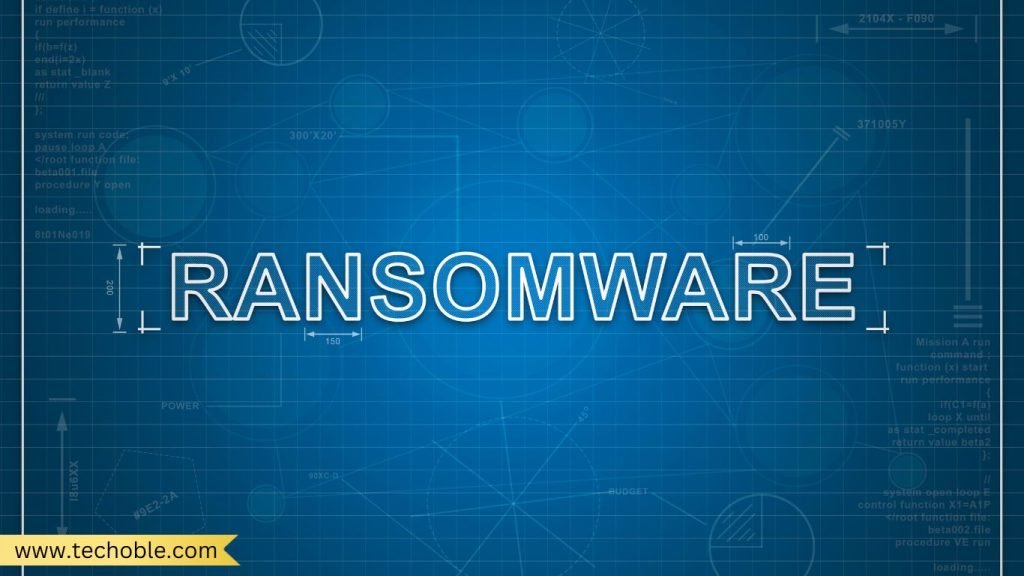 Ransomware is one of the fastest-growing cyber threats, targeting individuals, companies, and institutions worldwide. This article explores how to defend against ransomware with the best practices for 2025. With proper preparation and a clear strategy, businesses and individuals can significantly reduce the risks of falling victim to ransomware.
Ransomware is one of the fastest-growing cyber threats, targeting individuals, companies, and institutions worldwide. This article explores how to defend against ransomware with the best practices for 2025. With proper preparation and a clear strategy, businesses and individuals can significantly reduce the risks of falling victim to ransomware.
What is Ransomware?
Ransomware is malicious software designed to block access to data or systems until a ransom is paid. Hackers often demand payment in cryptocurrency, making it difficult to trace. Some of the latest ransomware variants also use double-extortion tactics: they steal data and threaten to release it unless the ransom is paid.
Ransomware impacts not only data but also critical infrastructure like healthcare and finance. Understanding this threat and preparing a ransomware prevention checklist is essential for security in 2025.
How Does Ransomware Spread?
Ransomware spreads through several methods, targeting vulnerable systems and unsuspecting users. Below are the most common techniques:
- Phishing Emails: Fake emails tricking users into clicking malicious links.
- Remote Desktop Protocol (RDP) Exploits: Hackers take advantage of unsecured RDP connections.
- Software Vulnerabilities: Unpatched systems provide easy access points.
- Drive-By Downloads: Users download ransomware unknowingly from infected websites.
- Supply Chain Attacks: Attackers infect third-party vendors to reach their targets.
By knowing these attack vectors, companies can deploy effective ransomware prevention best practices to block attacks before they happen.
What Can Make Us More Susceptible to Ransomware?
Several factors increase the risk of ransomware attacks:
- Lack of Employee Training: Employees unaware of phishing techniques are more likely to click on malicious links.
- Outdated Software: Unpatched software contains vulnerabilities hackers exploit.
- Weak Passwords: Simple passwords without multi-factor authentication (MFA) are easily cracked.
- Unsecured Remote Access: Remote work introduces new risks if not properly managed.
- Lack of Network Segmentation: A single compromised device can spread ransomware across the entire network.
Organizations must address these weaknesses to stay protected. How can companies prevent ransomware? By targeting these vulnerabilities, they can build a resilient defense.
Ransomware Prevention Best Practices
 Here is a list of ransomware prevention best practices that companies and individuals can adopt to protect their data in 2025.
Here is a list of ransomware prevention best practices that companies and individuals can adopt to protect their data in 2025.
- Regular Data Backups
- Back up data daily or weekly.
- Store backups offline or in secure cloud storage.
- Test backups regularly to ensure they work.
- Implement Multi-Factor Authentication (MFA)
- Use MFA on all sensitive systems and accounts.
- Incorporate biometric verification where possible.
- Keep Software Updated
- Install patches for operating systems and software as soon as they are available.
- Enable automatic updates for critical programs.
- Train Employees on Cybersecurity Awareness
- Run phishing simulations to test employees’ responses.
- Conduct regular training sessions on identifying threats.
- Network Segmentation and Zero-Trust Model
- Isolate sensitive data and critical systems.
- Apply the “trust no one” principle, verifying every access request.
- Endpoint Detection and Response (EDR) Solutions
- Use EDR tools to monitor, detect, and respond to threats in real-time.
- Leverage AI-powered detection systems for better threat intelligence.
These best practices reduce the risk of infection and help organizations build a ransomware prevention checklist for proactive defense.
What to Avoid During a Ransomware Attack
Knowing what not to do during ransomware attacks is just as important as knowing how to respond.
- Don’t Pay the Ransom: Paying encourages further attacks and does not guarantee data recovery.
- Don’t Panic: Panicking leads to rushed decisions and mistakes.
- Don’t Shut Down Systems Immediately: It may interfere with investigation efforts.
- Don’t Ignore the Incident: Even if the attack seems small, address it immediately.
Responding correctly to ransomware attacks can make recovery faster and reduce losses.
What is the Best Practice to Avoid Ransomware?
The best way to avoid ransomware is to take a multi-layered approach to cybersecurity. This means applying technical controls, employee training, and strict policies to prevent infection. Some of the top ransomware prevention best practices include:
- Consistent Backups: Protects against data loss.
- Endpoint Protection Software: Prevents infections from spreading.
- Regular Security Audits: Identifies vulnerabilities in time.
Following these steps, businesses can mitigate ransomware risks effectively.
How to Defend Against Ransomware: Best Practices for 2025 (Free)
Below is a ransomware prevention checklist to implement immediately:
| Step | Action | Description |
|---|---|---|
| Data Backup | Regular backups | Store offline or in the cloud. |
| Employee Training | Phishing simulations | Test employee readiness against phishing. |
| Software Patching | Automatic updates | Ensure systems are always up to date. |
| Multi-Factor Authentication | MFA on sensitive accounts | Use both passwords and biometric factors. |
| Endpoint Detection & Response | EDR solutions | Detect and respond to threats in real-time. |
| Network Segmentation | Zero-trust architecture | Limit access to critical resources. |
This checklist ensures your systems remain protected and mitigation strategies for ransomware are in place.
How to Prevent Ransomware Attacks in Healthcare
 Healthcare is one of the most targeted industries by ransomware. Protecting healthcare systems requires special considerations:
Healthcare is one of the most targeted industries by ransomware. Protecting healthcare systems requires special considerations:
- Encrypt Patient Data: Ensure data is encrypted both at rest and in transit.
- Limit Access to Records: Use role-based access to control who can view sensitive information.
- Regular Security Drills: Test the staff’s ability to handle ransomware scenarios.
- Backup Electronic Health Records (EHR): Ensure patient data is recoverable in case of an attack.
Implementing these steps reduces the likelihood of successful attacks on healthcare facilities.
How to Recover from Ransomware Attack
If your system is infected, immediate action is necessary to recover effectively:
- Isolate Infected Devices
- Disconnect the infected system from the network to stop the spread.
- Report the Incident
- Inform local authorities and relevant cybersecurity agencies.
- Restore Data from Backups
- Use your offline or cloud backups to restore compromised systems.
- Investigate the Root Cause
- Identify how the ransomware entered your system and fix the vulnerability.
- Communicate with Stakeholders
- Notify employees, customers, and partners about the attack and the steps being taken.
A well-prepared recovery plan minimizes downtime and helps prevent future incidents.
How Can Companies Prevent Ransomware in 2025?
Prevention is better than recovery. To prevent ransomware attacks, companies need to:
- Conduct Regular Security Audits: Find and fix vulnerabilities before attackers do.
- Enforce Password Policies: Use strong, unique passwords for all accounts.
- Secure Remote Access Points: Implement VPNs and monitor remote connections.
- Monitor Third-Party Vendors: Ensure partners follow strict security protocols.
These steps keep businesses one step ahead of cybercriminals.
Ransomware Trends to Watch in 2025
Ransomware attacks are evolving rapidly. Here are some trends to keep an eye on:
- Ransomware-as-a-Service (RaaS): Cybercriminals sell ransomware kits to others.
- IoT Devices Targeted: Increased attacks on connected devices.
- Triple Extortion Tactics: Hackers demand ransoms from victims, customers, and partners.
- AI in Cybersecurity: Machine learning tools enhance threat detection.
Staying ahead of these trends ensures businesses remain secure.
Ransomware attacks will continue to pose a major threat in 2025, but prevention is possible with the right strategies. Regular backups, employee training, multi-factor authentication, and EDR solutions are essential elements of a comprehensive defense plan. Following these best practices for ransomware prevention in 2025, businesses can stay protected, recover faster, and avoid falling victim to these costly attacks.